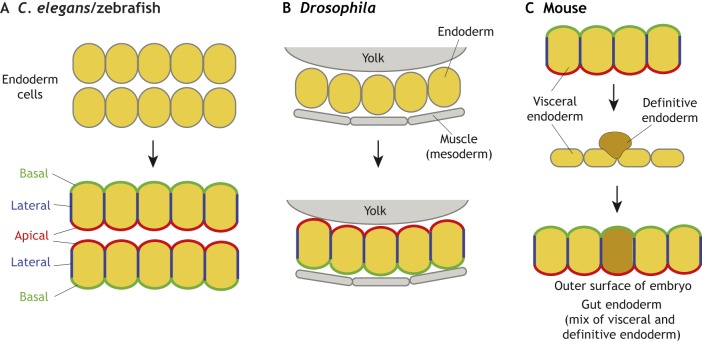Fig. 4.
Endoderm repolarization: the different ways cells can re-polarize. (A) In C. elegans and zebrafish, the endoderm comprises a rod of cells that localizes apico-basal polarity proteins at its centre and subsequently generates multiple small lumens, which coalesce into a single one. (B) In Drosophila, the endoderm comprises a cup-shaped sheet of cells acquiring apico-basal polarity through cell-cell and cell-basement membrane interactions. (C) In mice, definitive endoderm cells (brown) repolarize as they intercalate into the overlying visceral endoderm (yellow) epithelium. During the intercalation process, visceral endoderm cells relax their apico-basal polarity and cell-cell junctions to facilitate definitive endoderm intercalation. However, once definitive endoderm cells have egressed into the visceral endoderm epithelium, both cell types coordinately repolarize and re-establish cell-cell junctions.

